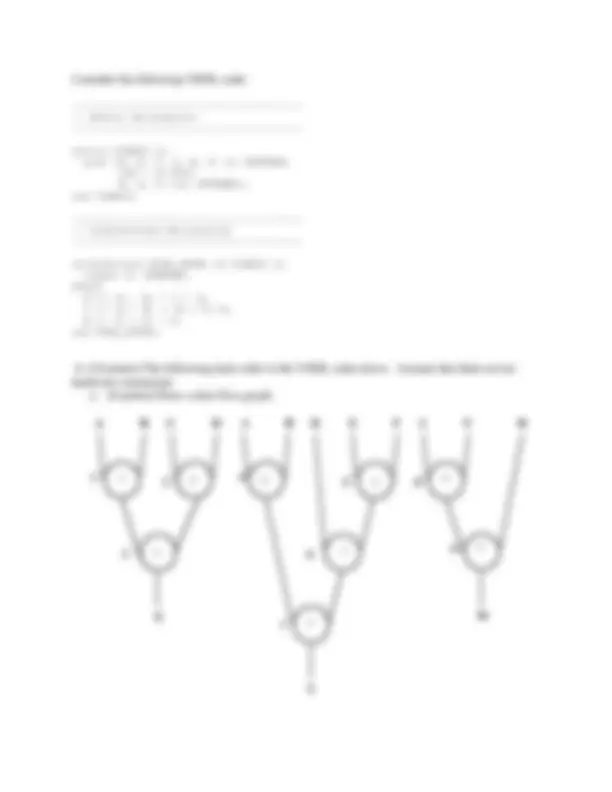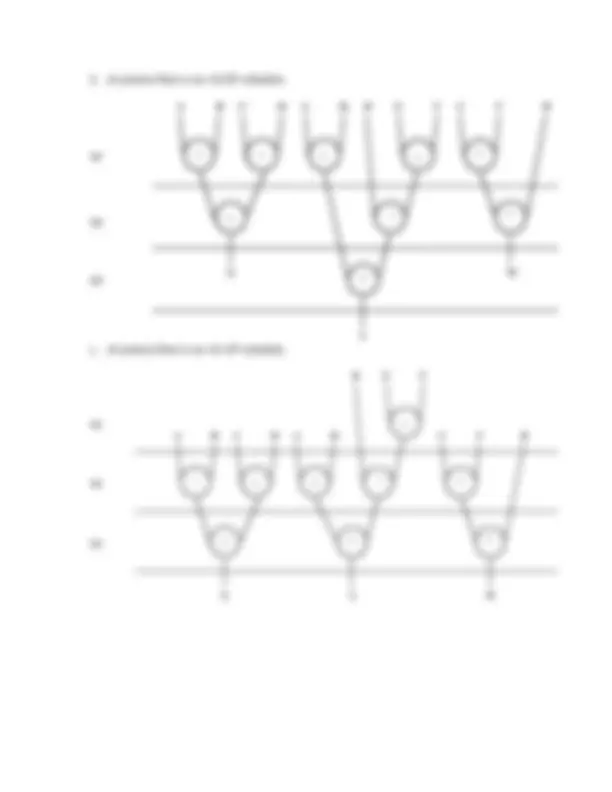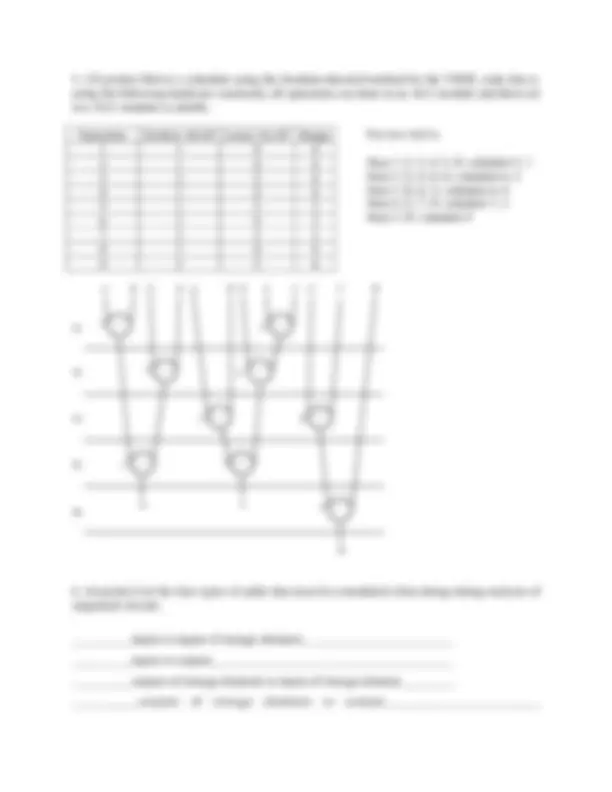






Study with the several resources on Docsity

Earn points by helping other students or get them with a premium plan


Prepare for your exams
Study with the several resources on Docsity

Earn points to download
Earn points by helping other students or get them with a premium plan
Community
Ask the community for help and clear up your study doubts
Discover the best universities in your country according to Docsity users
Free resources
Download our free guides on studying techniques, anxiety management strategies, and thesis advice from Docsity tutors
The solutions to the final exam of the electrical & computer engineering department, cpe 426 01, at the university of alabama in huntsville, spring 2002. Answers to various vhdl-related questions, such as identifying hardware elements from vhdl code, drawing transistor-level diagrams, modifying vhdl models, and deriving schedules. Essential for students preparing for exams or reviewing vhdl concepts.
Typology: Exams
1 / 8

This page cannot be seen from the preview
Don't miss anything!





The University of Alabama in Huntsville Electrical & Computer Engineering Department CPE 426 01 Final Exam Solution Spring 2002
Name: _______________________________
library ieee; use ieee.std_logic_1164.all;
entity WIDGET is Port (A, B : in SIGNED (0 to 2); CLK, RESET : in std_logic; Z : out SIGNED(0 to 2)); end WIDGET;
architecture EXAMPLE of WIDGET is begin process (CLK, RESET) begin if (RESET = ‘1’ then) Z <= ‘0’;` elsif (CLK = ‘1’) then Z <= A nor B; end if; end process; end EXAMPLE;
VCC
GND
x y z
x
y
z
f
library ieee; use ieee.std_logic_1164.all; use ieee.std_logic_unsigned.all;
entity UPCOUNT is generic (N : integer); port ( CLOCK, RESETN, E : in std_logic; LD : in std_logic; LD_INPUT : in std_logic_vector (N-1 downto 0); Q : out std_logic_vector (N-1 downto 0)); end UPCOUNT;
architecture BEHAVIOR of UPCOUNT is signal COUNT : std_logic_vector (N-1 downto 0); begin process (CLOCK, RESETN, LD) begin if RESETN = ‘0’ then COUNT <= (OTHERS => ‘0’); if (LD = ‘0’) then COUNT <= LD_INPUT; elsif (CLOCK’event and CLOCK = ‘1’) then if E = ‘1’ then COUNT <= COUNT + 1; else COUNT <= COUNT; end if; end if; end process Q <= COUNT;
end BEHAVIOR;
b. (6 points) Derive an ASAP schedule.
-- (^) *****
A B
/
+
E F
+
+
A B C D
X
Y
D C F
B
W
S
S
S
c. (6 points) Derive an ALAP schedule.
-- (^) *****
A B
*** /**
+
E F
+
*** +**
A B C D
X Y
D
C F
B
W
S
S
S
Operation Earliest ASAP Latest ALAP Range 1 1 4 4 2 1 4 4 3 2 5 4 4 1 4 4 5 1 3 3 6 2 4 3 7 3 5 3 8 1 4 4 9 2 5 4
For two ALUs,
Step 1 {1, 2, 4, 5, 8} schedule 5, 1 Step 2 {2, 4, 8, 6} schedule 6, 2 Step 3 {4, 8, 3} schedule 4, 8 Step 4 {3, 7, 9} schedule 7, 3 Step 5 {9} schedule 9
--
A B
*** /**
+
E F
+
*** +**
A B C D
X Y
D C F
B
W
1
2
3
4
5
6
7
8
9
S
S
S
S
S
__________inputs to inputs of storage elements_________________________
__________inputs to outputs________________________________________
__________outputs of storage elements to inputs of storage element_________
__________outputs of storage elements to outputs_______________________
library ieee; use ieee.std_logic_1164.all;
entity MUX4TO1 is port ( DATA_IN : in std_logic_vector (3 downto 0); SEL : in std_logic_vector (1 downto 0); DATA_OUT : out std_logic); end MUX4TO1;
architecture CASEMUX of MUX4TO1 is begin process (DATA_IN, SEL) begin case SEL is when "00" => DATA_OUT <= DATA_IN(0); when "01" => DATA_OUT <= DATA_IN(1); when "10" => DATA_OUT <= DATA_IN(2); when "11" => DATA_OUT <= DATA_IN(3); when others => DATA_OUT <= 'X'; end case; end process; end CASEMUX;
library ieee; use ieee.std_logic_1164.all; use work.all;
entity MUX16TO1 is port (DATA_IN : in std_logic_vector (15 downto 0); SEL : in std_logic_vector (3 downto 0); DATA_OUT : out std_logic); end MUX16TO1;
architecture STRUCT of MUX16TO1 is component MUX4TO1C port (DATA_IN : in std_logic_vector (3 downto 0); SEL : in std_logic_vector (1 downto 0); DATA_OUT : out std_logic); end component; for all : MUX4TO1C use entity MUX4TO1(CASEMUX); signal INTERNAL : std_logic_vector (3 downto 0); begin U1 : MUX4TO1C port map (DATA_IN(3 downto 0), SEL(1 downto 0), INTERNAL(3)); U2 : MUX4TO1C port map (DATA_IN(7 downto 4), SEL(1 downto 0), INTERNAL(2)); U3 : MUX4TO1C port map (DATA_IN(11 downto 8), SEL(1 downto 0), INTERNAL(1)); U4 : MUX4TO1C port map (DATA_IN(15 downto 12), SEL(1 downto 0), INTERNAL(0)); U5 : MUX4TO1C port map (INTERNAL(3 downto 0), SEL(3 downto 2), DATA_OUT); end STRUCT;
Let x be the number of parts. Then,
$25,000 + $20X = $166,000 + $6x 14x = 141, x = 10071